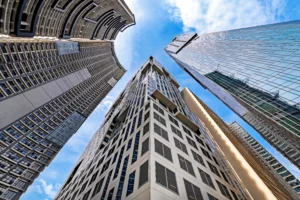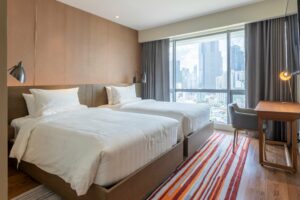Century Properties, Inc. expects its bottom line hitting P3 billion by 2015 on continued expansion and diversification.
Company officials recently announced plans to boost their property portfolio in tourism to take advantage of the continuing growth of the property market.
Jose E.B. Antonio, company executive chairman of the board, said profit last year reached P1.86 billion, more than double the P866 million reported in 2011.
Revenues reached P9.60 billion, double from last year’s P4.7 billion. Earnings before tax and other accounting deductions (EBITDA) stood at P2.54 billion, 88 percent higher than the P1.35 billion the previous year.
“The 2012 results reflect the culmination of Century Properties’ sustained performance over the last three years,” said Antonio.
“We look forward at 2012 as a remarkable breakout year for Century Properties with a solid platform that will enable us to take the company to an even higher level,” he added.
Antonio said the three years it has been listed with the Philippine Stock Exchange has been a “transformative” period.
“On top of Century Properties financial growth, we also achieved other key milestones. Quite notably, we established an industry-leading international sales platform and created a balanced portfolio of developments for the luxury, middle-income and affordable segments. We introduced unprecedented development collaborations with global brands, listed the company in the Philippine Stock Exchange, successfully raised equity capital three thrice since 2011 raising a total of P5.6 billion, expand our relationship with 11 financial institutions that have extended P6.6 billion of credit facilities, and progressed from developing stand-alone projects to master-planned communities,” said Antonio.
He added: “Century Properties is now well set for the next phase of its growth.”
Antonio said the company is looking at tourism, particularly hotel operation, as part of its expansion. Details will be announced in the second half of this year.
“We have a shortlist of locations which include Bicol, We are also looking at being a player in the tourism industry,” he said.
Antonio said the Philippines, despite having attained growth in tourism arrivals to 4.3 million in 2012, that number is “very minuscule” compared to those that go to the rest of Asia like Thailand which attracts 22 million tourists and Vietnam, 6 million.
He said there is a lot of opportunity for the Philippines because it has the attractions. “We have the beaches, the mountains, the people, we have everything that is required and needed by the tourists, except they have nowhere to land. I know that the basis of all businesses aside from the environment is infrastructure. So we are looking towards the pronouncements of the government that our infrastructure will come into play very soon,” said Antonio.
Antonio said tourism is the next sunshine industry in the Philippines.
“It is an industry that trickles down to the last level of society… is able to give jobs from waiters to tricycle drivers,” he said.
Century Properties expects to realize about P40 billion in pre-sales of its yet-to-be-launched projects.
Pre-sales last year reached P30 billion, 40 percent higher than the previous year’s P21.4 billion.
For the next three years, Century Properties sees pre-sales to hit an aggregate amount of P85 billion.
Key to the company’s continued growth will be the expansion of Century Properties’ landbank, though acquiring will remain opportunistic, according to Antonio.
Meanwhile, as the company’s current projects cater more to the luxury market, it enjoys the attention of many foreign buyers given its relative affordability vis-a-vis a similar project overseas.
“The luxury brands attract not only high net worth individuals, entrepreneurs in the Philippines but also foreign buyers,” Antonio said.
A unit at the Trump Tower Manila, for example, costs a lot lower than a similar project in say Singapore or Hong Kong.
“Roughly 20 percent of our total sales for our luxury projects are bought by foreigners,” said Antonio.
Century Properties said of their property sales, about 74 percent came from the international market — overseas-based Filipinos and foreigners, with the amount further divided into 24 percent coming from the luxury products, 33 percent for middle income, and 43 percent from the affordable segment.
Source: Malaya | April 11, 2013





